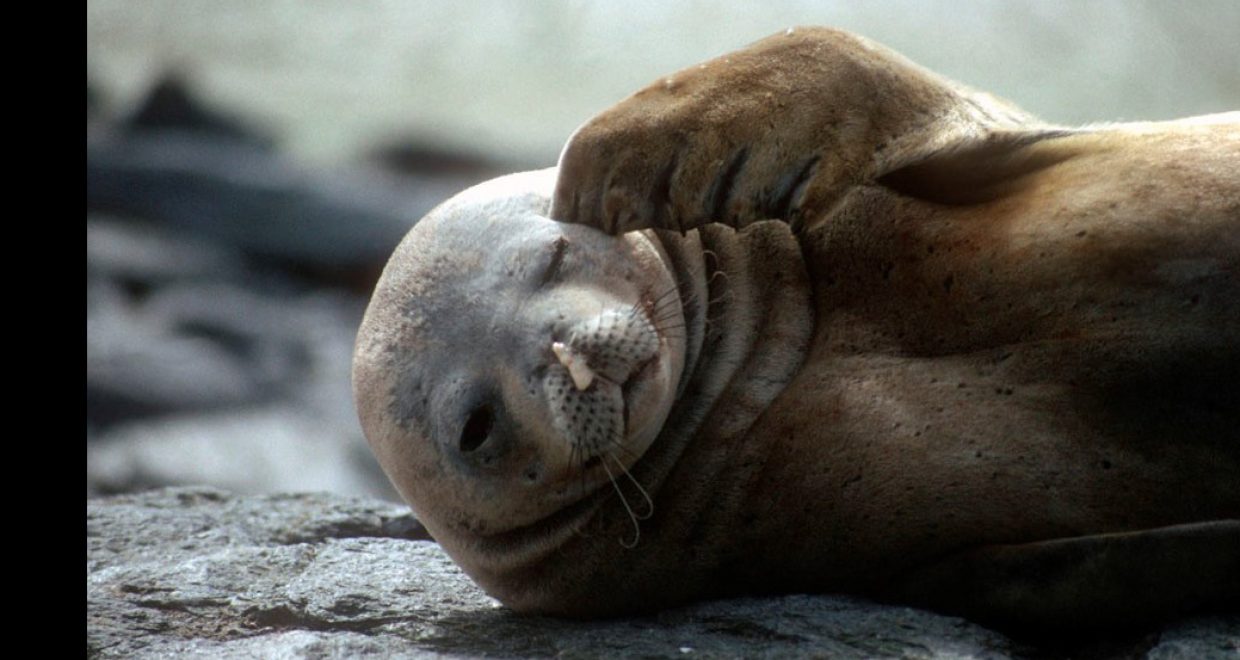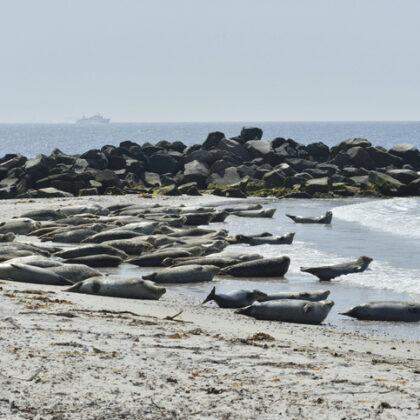How Weddell seals make the best of unusual oceanographic conditions
As one of the very few species of mammals to live and breed all year in the Antarctic Ocean, Weddell seals (Leptonychotes weddellii) can give us clues as to how Antarctic predators will adapt to changes in their warming environment. The seas surrounding Antarctica are warming rapidly with the warmer water rising to the surface at a rate more than three times faster than was previously thought, according to a study published by Nature Communications in January. This increase in temperature is caused by the absorption of heat mainly from the burning fossil fuels. The ramifications of climate change in Antarctica and the species that live there are still largely unknown. A recent study published by Antarctic Science on Weddell seal behaviour demonstrates that by studying anomalous weather and environmental events, we can better predict how other polar species may respond to changes in their environments.
Dr. Sara Labrousse and her team of scientists tagged and monitored the behaviour of four Weddell seals in the Filchner‐Ronne Ice Shelf region, which borders the Weddell Sea, from February to June 2017, a period of time that saw atypical oceanographic conditions. Labrousse’s team attached a conductivity-temperature-depth satellite relay data logger (CTD-SRDL) to each seal, which documented its diving behaviour and transmitted the data via satellite. In just five months, the CTD-SRDLs recorded over 4800 dives by the seals in 4011 locations throughout the ice shelf!
The Weddell seals were observed foraging for longer periods of time per dive in Ice Shelf Water (ISW) or in the most tempestuous waters in between ISW and Modified Warm Deep Water (MWDW). The seals appeared to be benefiting from the warmer water. The winter of 2017 saw an influx of warmer than usual MWDW that continued throughout the season, and April saw maximum temperatures that were ~0.5°C warmer than in previous years. This may be a result of early sea-ice melting, allowing increasing amounts of warm water to reach the Filchner-Ronne Ice Shelf. The shelf experienced temperatures that increased to and stayed at ~1.5°C after June 2017, whereas temperatures generally drop after June in average years. The data on Weddell seal diving behaviour collected in this study differ from others that saw the seals diving in alternative areas during typical oceanographic conditions.
Based on their findings, Labrousse’s team concluded that the behaviour observed was a result of the warmer than average water flowing through the Filchner trough. In studying Weddell seals, the scientists were able to postulate about other species such as the Antarctic silverfish and the Antarctic toothfish (prey species). This research on Weddell seal behaviour during an unusually warm Antarctic winter is an important addition to our understanding of the resilience and possible future responses not only of this species, but of others to changing oceanographic conditions.
The paper “Weddell seal behaviour during an exceptional oceanographic event in the Filchner-Ronne Ice Shelf in 2017” by Sara Labrousse, Svenja Ryan, Fabien Roquet, Baptiste Picard, Clive R. McMahon, Robert Harcourt, Mark Hindell, Hervé Le Goff, Antonio Lourenco, Yves David, Jean-Baptiste Sallée and Jean-Benoit Charrassinis published in the journal Antarctic Science, and is available free for a limited time here.
Image credit: Peter Convey






